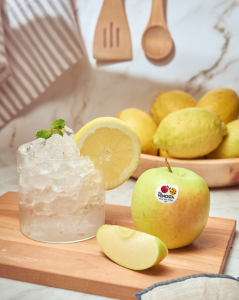The AGF Group will remember 2022 as the year when their famous brand, Fashion Watermelon, reached its 20 year anniversary (they will celebrate it at Fruit Attraction), but also as the year of inflation and when it started its new strategy to adapt to a difficulty which, without any doubt, will remain valid over the next 20 years, global warming.
For Joaquín Hidalgo, the General Coordinator of AGF Group – Fashion Watermelon, over the next few years fast-moving adaptation to the changes that are going to occur will be essential. “It is wise to diversify. We are not going to do this because we only work with watermelons, but we do want to look for new production areas to adapt to climate change,” he advances to Fruit Today. His strategy involves looking for farms with suitable altitudes for each stage of the campaign, from sea level to the 600-700 m of La Mancha, a task where the limiting factor is the availability of water. “Watermelons need a thermal leap between day and night; they don’t like tropical nights with temperatures of 28 degrees.”
Fluctuations
The sector is ending the campaign with low yields, between 30-40% less production (30% in the case of Fashion compared to the forecasts) and a 35% rise in costs (the +200% of electricity being particularly significant). “The volume of watermelons was much lower than in 2021, to a large extent due to the very high temperatures. We have experienced a strange situation, with greater demand than supply. Watermelons have been very expensive and the prices in the supermarkets have been very high.” Today’s society has chosen summer fruit as a metaphor for inflation, but according to Joaquín Hidalgo, “the truth is that it is the only fruit that people could afford. Stone fruit reached prices of 3€/kg”.
As soon as the campaign ends, the Fashion Watermelon team start to plan the next one. A task that will be more complicated this year. “Theory says that, with this year’s good prices, farmers will plant more watermelons in 2023. But we are up against climate change. We are suffering from the harshest drought in Europe over the last 500 years, with unprecedented temperatures in many areas. A balance must be found between growth and availability of water.” On this point, planning is essential. “I would call for an analysis of the circumstances to be done: are they reproducible? Last year at the end of August we were ploughing out the fields due to a lack of demand, particularly in Europe, and this year everything is being sold.”






















